Two and a half years ago I lived on an island off the coast of Fiji at a marine conservation project. That project was my first introduction to just how hard life at a research station could be. We drank water from the river, showered in the river, and had one solar panel that charged our laptop; we also had to carry dive gear down a cliff every day but that’s another story. My favourite thing about my time there though was going back to the mainland on the weekends to see my friend/shark biologist Gauthier Mescam from Projects Abroad and go diving with the bulls of Beqa with Beqa Adventure Divers, or BAD for short. On the 6th of September 2017, I had the opportunity to return to Fiji and dive with the bulls that had given me my first introduction to shark diving all those years ago with not only my mer-mum Jayne Jenkins and scholar-sister Mae Dorricott, but our dear friends Madeleine Mcgrath and Sophie Kesteven.
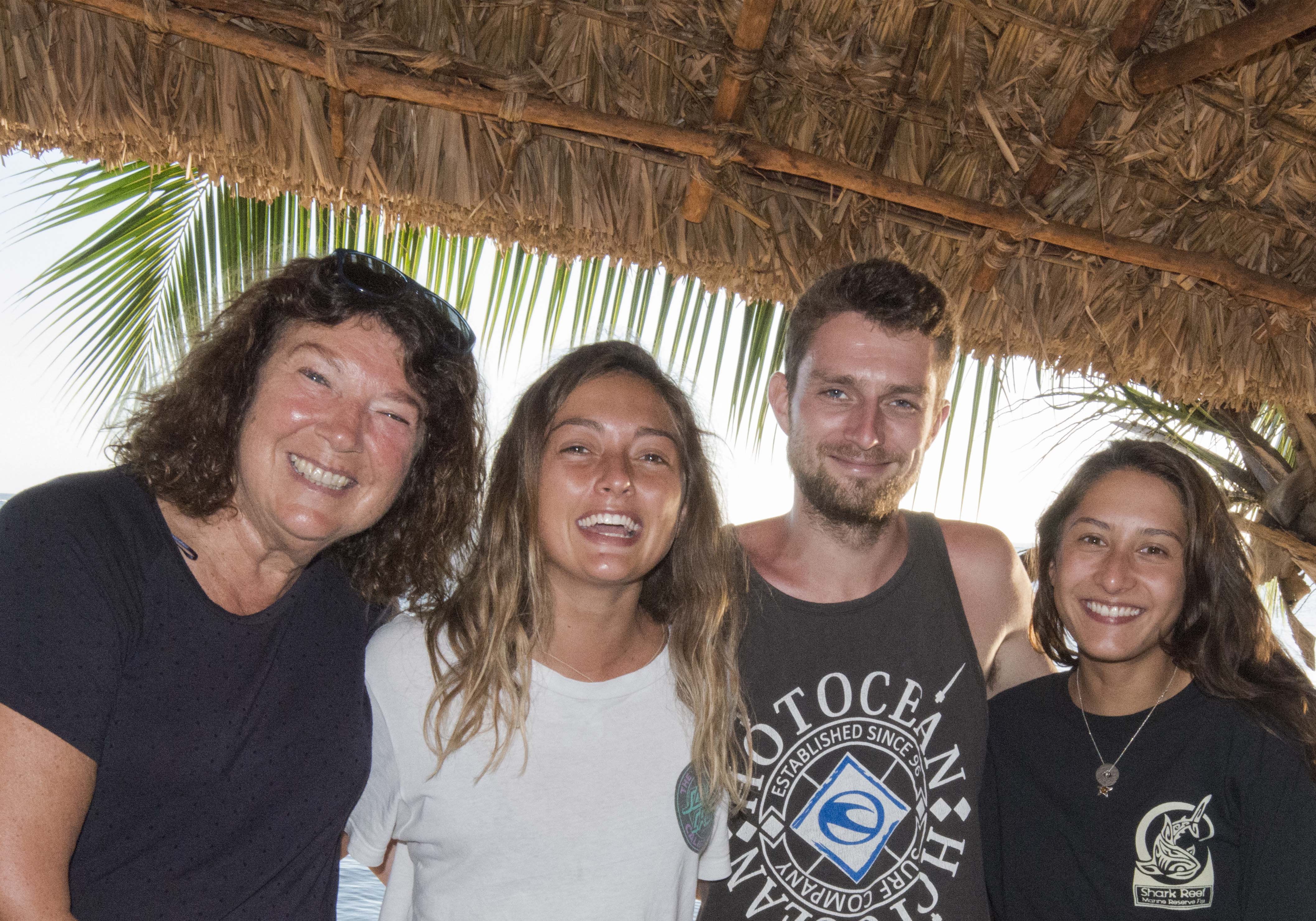
Photo by Madeleine McGrath
The bull shark dive run by BAD, in my humble opinion, is one of the best shark dives in the world. Beqa Adventure Divers is run by Mike Neumann. Mike established the Shark Reef Marine Reserve, and it was designated Fiji’s first marine reserve in 2014, to not only protect the reefs and the life within them, but to ensure the future of the villages that depend on the resources the reef provide. The Wainiyabia and Galoa villages traditionally own the rights to the reef, and a percentage of each dive fee is donated back to the villages to ensure they make the same or greater profit from the reef by being part of ecotourism, instead of fishing it and exploiting its resources. Not only does the village profit from the income, but each year 1 candidate is selected from the villages to do an internship for a year, that will take them from open water to divemaster. This type of ecotourism is setting the standards for diving industries all over the world.
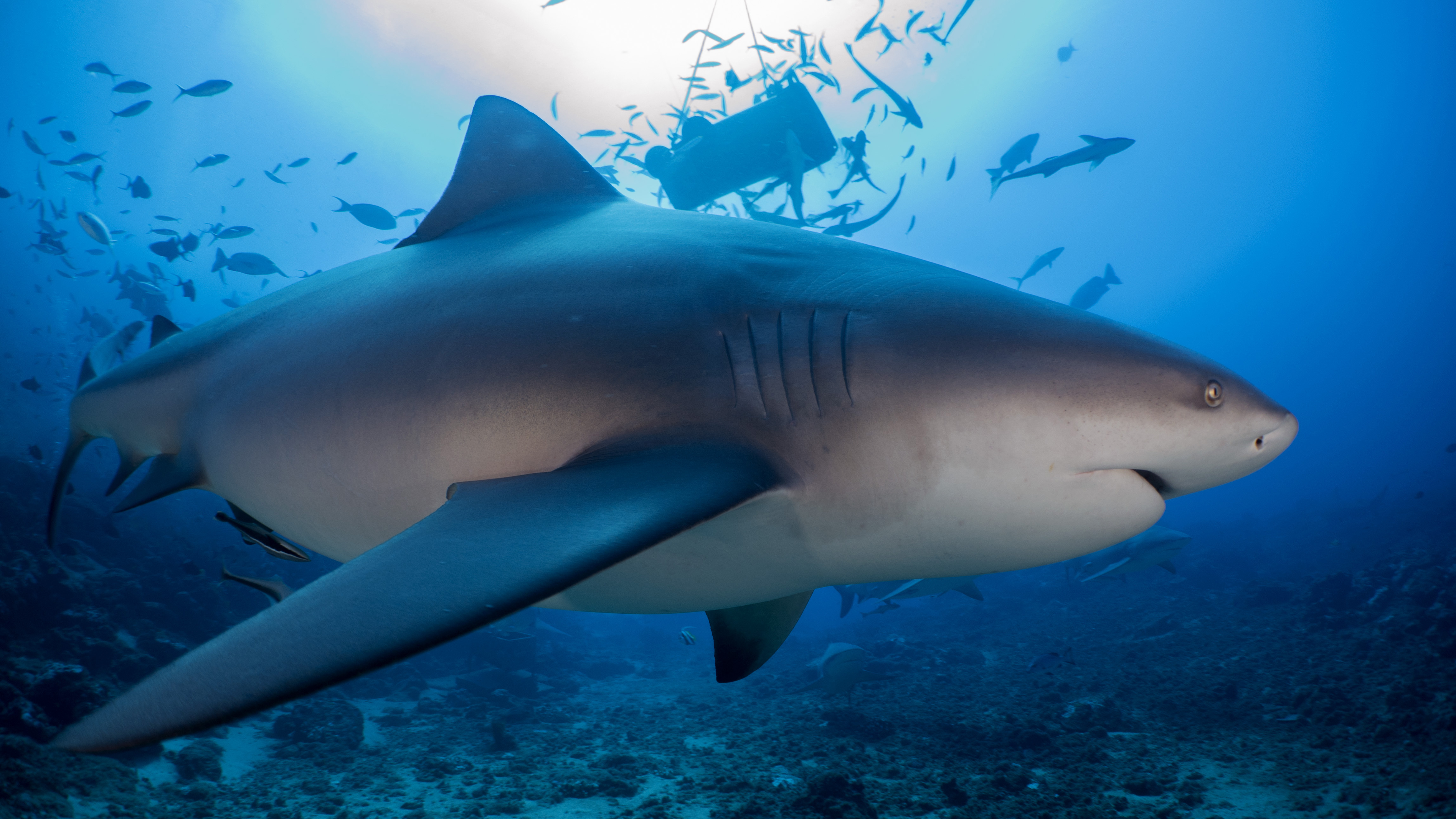
Photo by Melinda Brown
There have been numerous studies done on these bull sharks, and BAD collect data on all of their dives, noting the number of sharks and abundance of other predators that were present during the dives, as well as collecting biopsy samples, noting behaviour, tides, lunar phases and so much more. This allows BAD to track their influence on these animals. They can see if numbers are declining or increasing in that area, and by taking biopsies they are able to determine how much of the shark’s diet consists of the tuna heads that they feed them. Shark feeding can often be a controversial issue; however, Mike sums up the situation at BAD perfectly with his café/restaurant analogy. The sharks of Beqa know that there is food at the reef between certain times, however it’s much like us knowing there’s a café down the road that we could go and get a snack from. Sometimes we will go, other times we will not. This is exactly what it’s like for the Beqa Bulls. There are regulars, but they still migrate, and they still do their own sharky things, and the research collected by the team provides evidence for this theory.
Knowing that the sharks on the reserve are so well protected makes the dives even better. As you sink down into the brilliant blue beneath you, you can see the shapes of the big bad bulls, slowly cruising the reef, waiting for the divers and their food, to arrive. As you arrive at the wall that offers you a front row seat to the show that’s about to start, you can’t help but look around and wonder if what you’re seeing is actually real. Everyone I know who has done the BAD dive doesn’t feel fear as they sink towards the sharks. It’s exhilarating and awe inspiring. The sheer beauty of the sharks distracts you from any fears you may have, and the arena you enter is so surreal it’s hard to believe you’re seeing what’s in front of you. You get lost in the wildness of it all, yet the calm and silent setting draws you in so you really see the bulls; see them for what they truly are, the most perfectly designed creature on this planet.
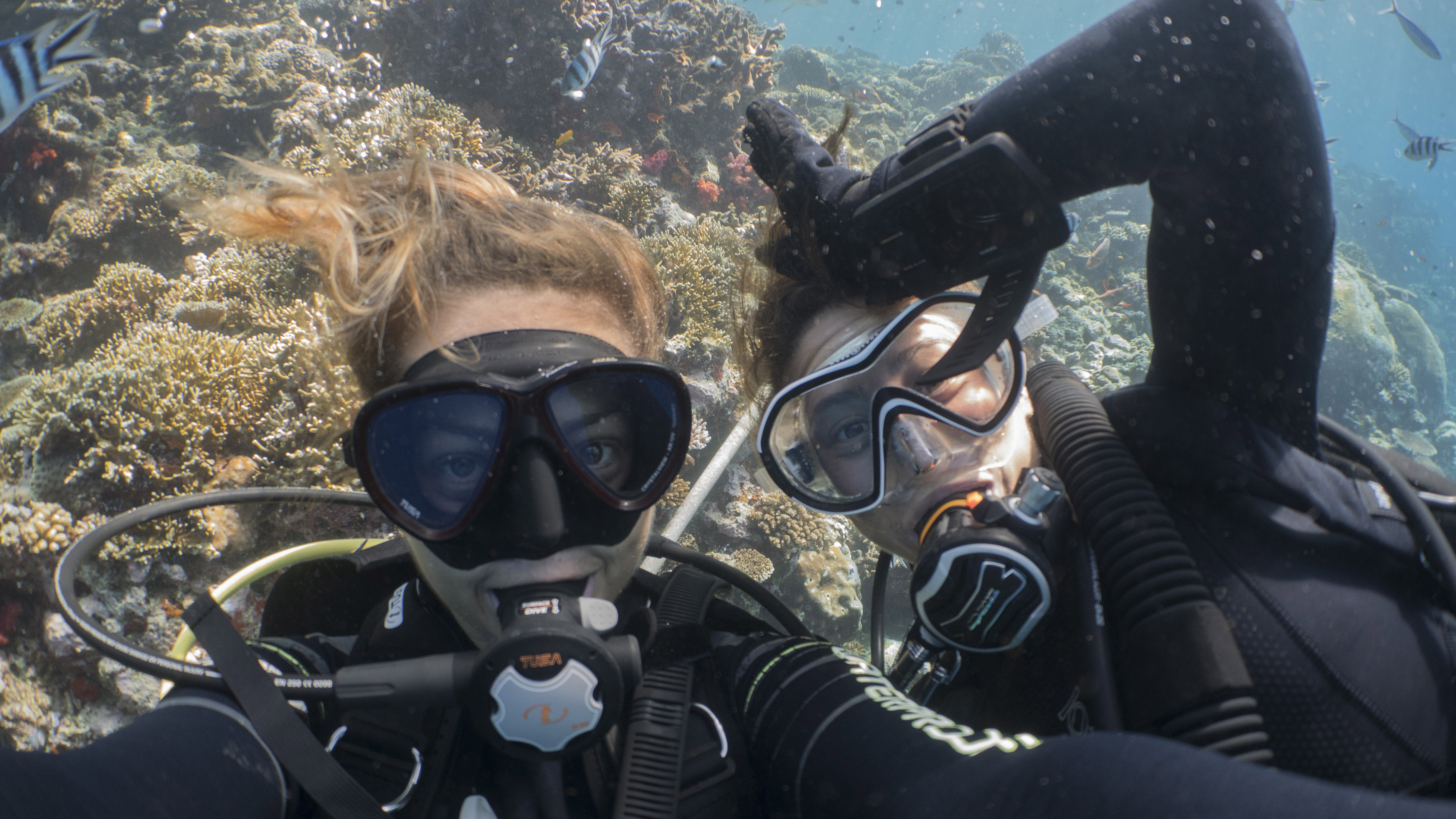
Photo by Melinda Brown
As their torpedo shaped bodies cruise the reef, my favourite thing to do is to watch their behaviour as they feed. The team at BAD have a few different techniques for feeding the sharks. One such technique is hand feeding them. The dive masters hold the tuna heads out to the sharks and wait for them to approach. The sharks appear almost shy, moving towards the food but not taking it. Only certain sharks are hand fed. It’s a learnt behaviour, and not all the sharks have picked it up. Some come in, nosing the food but not quite sure what to do. Other sharks will only feed from the bin that floats above the arena, and is operated by a divemaster, who sporadically deposits tuna heads in front of the divers. These behaviours are obvious signs of individual personality and behaviour within the group of sharks, and seeing it first hand always thrills me. Personality in sharks is not well studied, however its incredibly evident they all have their own personality when you are in the water with them. Often a smaller shark will sneak in and steal a piece of fish from the larger more dominant sharks, and the big females will chase them, telling them that they have to wait their turn, they have to learn their place in the hierarchy. Watching animals interact with each other always leaves me mesmerised. Their body language is so subtle, yet so clear. They move with intention.
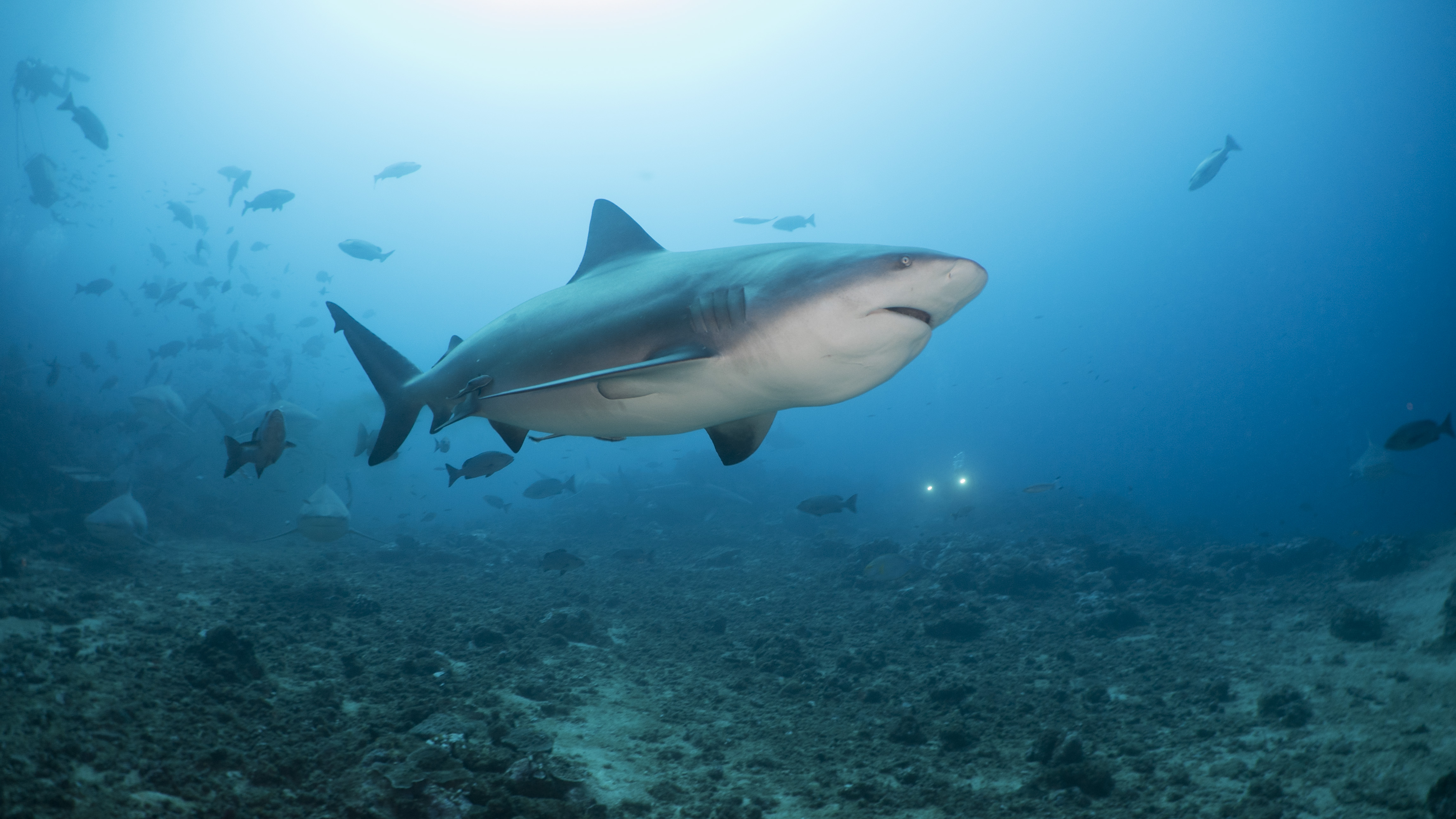
Photo by Melinda Brown
Going back to BAD was not only special for me because of my love for the sharks there and the passion they inspired in me all those years, but because I was given the chance to go in ‘The Hole’. ‘The Hole’ is exactly what it sounds like, a hole in the reef at about 5m. It’s big enough for a diver to shimmy down into it, with just your head and camera sticking out, leaving you eye to eye with the reef sharks. They zoom about you, coming in close to check you out, then they will either dart away or crash into you completely. It’s hard to keep up with the chaos of the hole, and as the sharks come in close you find yourself holding your breath, daring them to come closer, because everything looks so much further away through your wide-angle lens. The Hole was one of my favourite moments of the dive, so much so that I told everyone after my first time in there that I wanted to live in there forever with the sharks.
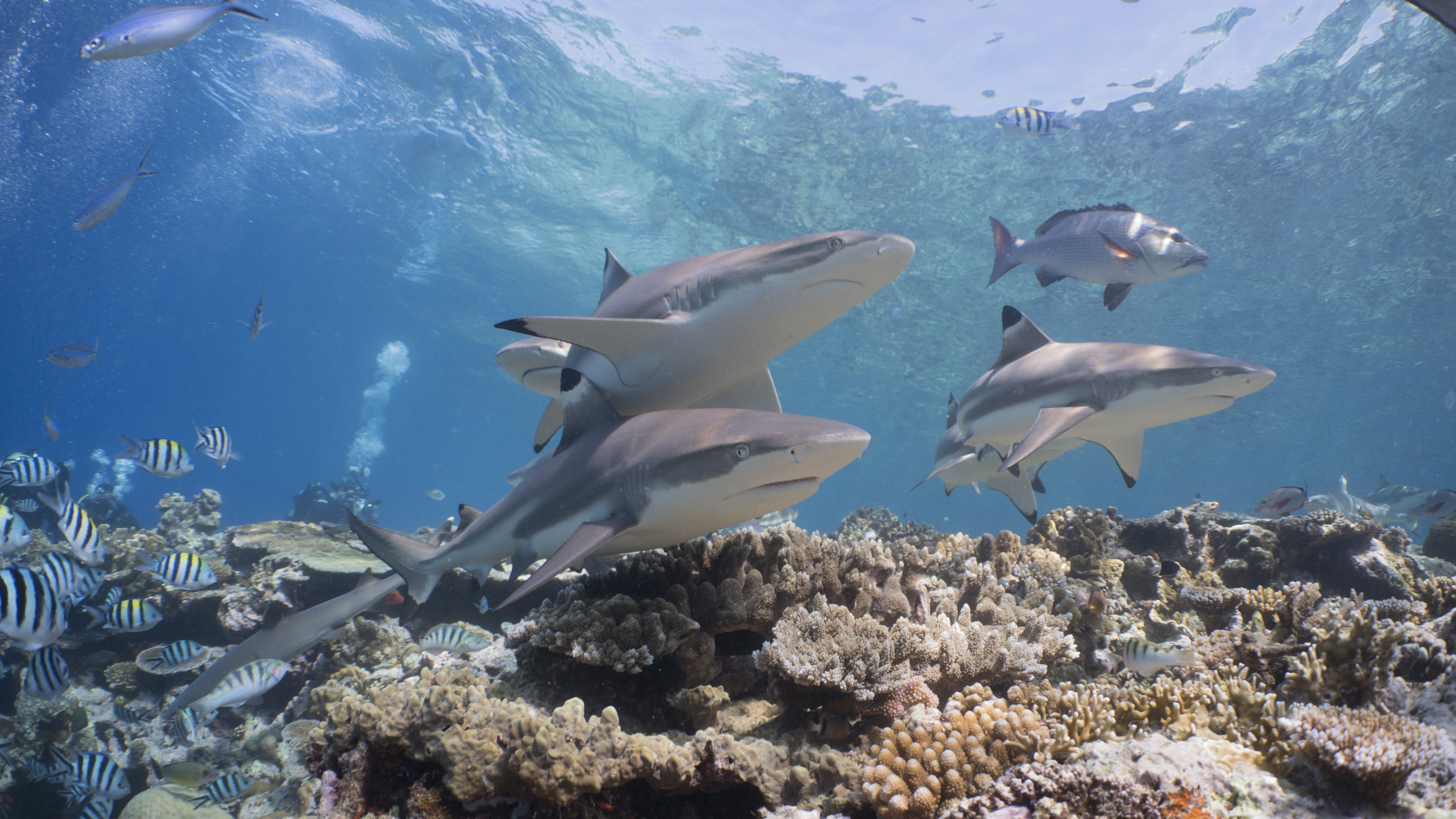
Photo by Melinda Brown
While I’ve been travelling this year I’ve been on an insane amount of flights (35 in the last six months to be exact), and I’ve been incredibly aware of my growing carbon footprint, so when Gauthier suggested that we help out with the Projects Abroad mangrove project to reduce our carbon footprints, Mae and I jumped at the chance. We were each given 40 mangrove propagules to plant, and we set off in the rain with Gauthier and photographer Christian Miller, to find a suitable place. We decided to plant them on the mud flats along the golf course, and as we waded down into the mud we realised it was a lot deeper than we originally thought. So, knee deep in mud, we planted our baby mangroves and whispered sweet nothings to them in hopes that they would grow into big beautiful trees that will filter carbon from our atmosphere for the rest of their (hopefully) long lives.

Photo by Christian Miller
Diving with Beqa Adventure Divers again was full of many new experiences, including being able to watch a white tip reef shark have an accelerometer attached to its tail for research being conducted through the James Cook University with Adam Barnett. The reef shark was quickly snatched up by Gauthier, and within a minute, Adam had attached the accelerometer and the shark had been released back onto the reef. Watching something that is quite difficult happen so smoothly and quickly was incredibly impressive. The accelerometer attached to the shark will hopefully shed light on it’s behaviour during the day and night, as there are concerns that feeding the smaller reef shark species may disrupt their normal nocturnal hunting behaviours. Research like this helps determine what is actually going on with the animals, and prevents major changes in their behaviours occurring that could potentially have detrimental flow on effects to the ecosystem.

Photo by Melinda Brown
My quick trip to back to Fiji to visit old friends and the Beqa Bulls was an incredibly welcome reminder of where my passion for sharks originated from all those years ago, and reminded me of the hard work I put in over the last few years to be where I am today. I feel so ridiculously lucky to have been given this opportunity through the OWUSS; everyday I have to remind myself that this year is real, that this is actually happening. Thank you Mike Neumann for having me back at Beqa Adventure Divers, and thank you to Gauthier and the BAD boys for looking after me not only in the water but on the boats as well. I will always treasure those moments with the bulls, and I will forever be grateful for all your help and inspiration you’ve provided me over the years. Thank you Jayne, Mae, Sophie and Madeleine for sharing these moments with me, I couldn’t have asked for a better dive team!